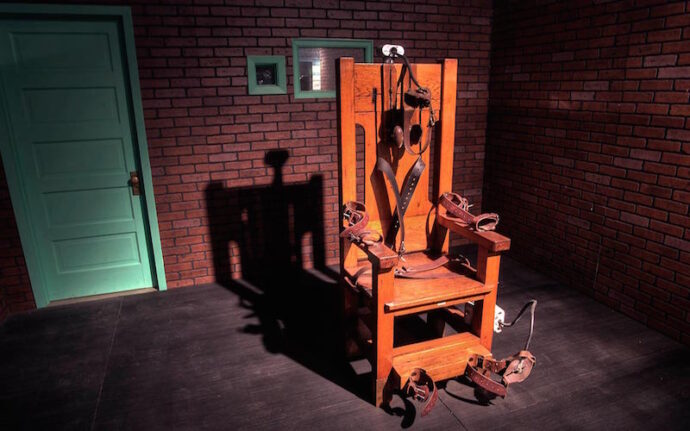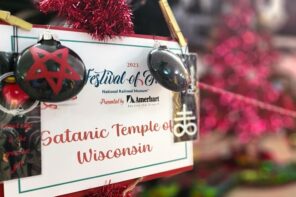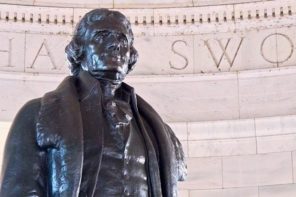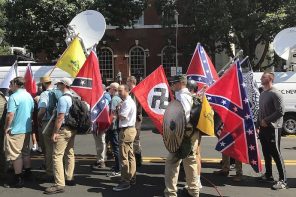While Dzhokhar Tsarnaev’s lawyers have argued that potential jurors might be biased based by the recent attacks in France, or because the region was so traumatized by the 2013 marathon bombing, there may be quite another cause for concern.
At the beginning of January, more than 1,200 people were summoned to the federal courthouse in Boston. These potential jurors in Dzhokhar Tsarnaev’s forthcoming trial were questioned in groups of 200 as the presiding judge winnowed the multitude down, and he has continued to do so in a second phase of questioning that began today. Although this process, called voir dire, is taking place in Massachusetts, which does not have the death penalty for state crimes, this is a federal case so it does permit the prosecution to seek the death penalty. Since nearly half of the state’s six million residents identify as Catholic, however, a sizable number of potential jurors—those who follow the Church’s teaching on capital punishment—are likely to be excluded from jury service for their religious beliefs.1
This regularly happens in capital trials across the country, and it’s important to reflect on this case to highlight both the potential Establishment Clause problem and a remedy to that problem.
The basics of criminal trials have been in the public consciousness lately, with high-profile grand juries in Ferguson, Missouri, and on Staten Island garnering intense coverage and commentary. Capital murder trials are no different in this respect: A prosecutor presents a grand jury with a bill of indictment after which the grand jury determines whether there is sufficient evidence to return a “true bill” of indictment. Once the jury is selected, the guilt phase of the capital trial begins. If the defendant is found guilty of capital murder, the sentencing phase of the trial will begin, during which the jury will determine whether or not to sentence the defendant to death.
Because the same jury typically sits both phases of the trial, and because jurors are potentially tasked with deciding a life-or-death question, jury pools typically are purged of those who would vote for death upon conviction in any murder case as well as those who would never vote for death in any case. This is known as “death-qualifying” the jury. The latter group poses an apparent problem of religious discrimination in instances where opposition to the death penalty comes from an individual juror’s religious belief.
At voir dire, potential jurors are routinely asked a variant of the following: “Do you have any religious, philosophical or moral beliefs which would prevent or substantially impair your ability to convict someone of a crime which potentially carried the death penalty?” This formulation, taken from the transcript of a capital trial in Virginia (Commonwealth v. Lenz), is representative of such questions nationally.
If jurors answer “yes” to the above, they are to be excluded from the jury “for cause”—that is, because they are unable to carry out their duty as jurors. The defense can attempt to rehabilitate the potential juror by attempting to establish that while they are opposed to the death penalty on principle, they would consider it in this case at sentencing, thus fulfilling their obligation to the state. More often, however, these attempts at rehabilitation follow the pattern in the following example from a Kentucky case:
At voir dire, a potential juror indicated that he held to Catholic teaching on the death penalty and that it would be difficult to get him to consider it. Defense counsel asked whether he would be able to set aside his views if the court instructed him to do so, but the court declared that it would not do so, and the juror was struck for cause (Appellant’s Brief, Wheeler v. Kentucky [Supreme Court of Kentucky], WL 32508332).
Prior to 1968, any potential juror who held “conscientious scruples against the death penalty” could be excluded for cause. In 1968, however, the Supreme Court’s decision in Witherspoon v. Illinois declared that such broad exclusions created “a tribunal organized to return a verdict of death.” The problem was not that the individuals on Witherspoon’s jury violated the Constitution; it was the jury as a whole that was violative, because it excluded viewpoints represented within the community and thus abridged the defendant’s Sixth and Fourteenth Amendment rights. The Court then articulated an acceptable standard for excluding such potential jurors: If they would automatically vote against death in any case, regardless of the facts of the case, they may be excluded, as may any potential jurors whose beliefs about the death penalty would bias or impair their ability to decide the defendant’s guilt. Which is where the aforementioned juror rehabilitation became relevant.
In 1985, with Wainwright v. Witt, the Court backed away from Witherspoon and adopted a different standard: If a potential juror’s beliefs would “prevent or substantially impair the performance of his duties as a juror in accordance with his instructions and his oath,” he could be struck for cause. Declaring that the unmistakable clarity of unfitness that Witherspoon demanded was too strict, Wainwright afforded trial courts the latitude to strike potential jurors if they give the “definite impression” that they would fail to consider a death sentence.
Compounding the problem is the fact that courts are permitted neither to exclude jurors based on their religious beliefs nor inquire into those beliefs. Indeed, in the main, courts tend to treat religious beliefs in Madisonian terms, in terms of the “duty we owe to our Creator.” On its face, a court’s refusal to ask a juror to put aside their beliefs is an acknowledgment of the competing claims of authority to which the individual is subject and protects the individual from being put in a position where a temporal authority could compel them to act in ways the individual believes run counter to his or her obligations to their transcendent authority.
How do you solve a problem like a death-qualified jury?
There are at least two problems with this kind of exclusion. First, death-qualified juries tend to be more prone to convict, as numerous studies have shown. The Court obliquely acknowledged evidence of this in Lockhart v. McCree (though Justice Thurgood Marshall, dissenting from Lockhart, did so more directly). The presumption of innocence on which our criminal justice system is to rest is thus weakened by death-qualifying the jury.
The second problem is the exclusion of specific components of the community, namely, those that oppose the death penalty. This tends to exclude members of particular faith traditions from jury service, as the Death Penalty Information center noted in 2005: “Catholics who have heeded their Church’s call to end the death penalty” are among those “believers of all stripes who… will not be able to serve even in the guilt-innocence phase of the trial.” (DPIC, “Blind Justice,” 6,) On January 8, the Catholic Mobilizing Network to End the Use of the Death Penalty echoed this language, posting on its Facebook page that “Catholics who heed the Pope’s call to oppose the death penalty may be disqualified from serving as jurors.”
The first problem, that of biasing the jury toward conviction, undermines the criminal justice process by enervating the presumption of innocence. The second problem undermines the idea that the capital jury is the community’s conscience. As the Supreme Court declared in Witherspoon, “a jury that must choose between life imprisonment and capital punishment can do little more—and must do nothing less—than express the conscience of the community on the ultimate question of life or death.” By excluding individuals with religious objections to capital punishment from juries, however, that community is by definition diminished, and potentially troublesome elements of its conscience neatly excised.
It’s difficult to ignore the appearance that these exclusions express governmental favoritism toward particular religious traditions at the expense of others. In 1986, in Batson v. Kentucky, the Supreme Court ruled that excluding potential jurors based on their race was unconstitutional. Such exclusions abridged the rights both of the defendants as well as of those excluded: Defendants, the Court noted, “have the right to be tried by a jury whose members are selected pursuant to nondiscriminatory criteria.” Potential jurors, meanwhile, must be afforded the “right and the opportunity to participate in the administration of justice.” The Batson principle has since been extended to exclusions based on gender (J.E.B. v. Alabama ex rel. T.B.) and should now be extended to these exclusions in capital cases.
There are several ways that this could be done. One suggestion is to treat death-scrupled citizens as a “cognizable group.” A cognizable group of jurors, or potential jurors, has some specific attribute that both defines and renders the group discrete and represents a “’community of interest’ that the jury pool would not adequately reflect if it excluded members of the group.” Race, ethnicity, religion, gender, and socioeconomic status are all recognized as cognizable groups.
Religious organizations, such as the American Friends Service Committee, have filed amicus curiae briefs in capital appeals arguing that the Court should deem the death-scrupled a cognizable group on the basis of the specific attribute—religiously motivated opposition to the death penalty. This renders the group at once identifiable and discrete, represents an element of the community’s conscience that should be brought to bear in criminal justice proceedings, and, because it links back to religious affiliation, ties this proposed cognizable group with one already recognized. This argument sits comfortably alongside the Madisonian conception of religion, and thus has some of the flaws of that concept.
We need not, however, accept this argument in order to resolve the problem that these exclusions raise; namely, that the apparent selection of religious traditions compatible with the rights and obligations of citizenship and the attendant communication of favor or disfavor. A different solution is suggested by the bifurcated nature of the capital trial itself: A jury should be impaneled for the guilt phase regardless of the jurors’ religious affiliations or any belief that the death penalty is immoral or is otherwise wrong.
This would avoid any question of governmental favor or disfavor of religious traditions, and thus would relieve any Establishment tension; would not unfairly bias juries toward conviction, and thus help preserve the necessary presumption of innocence; would not deprive citizens needlessly of their rights to sit on a jury; and, because the death-scrupled could be excused from the sentencing phase, when the life-or-death decision is to be made, would provide adequate protection for those individuals by allowing them to serve while preventing them from being put into a situation where their temporal and transcendent duties may conflict.
Tsarnaev’s prosecution is somewhat unique, in that it is a federal death penalty case being prosecuted in a state that has abolished the death penalty (which has happened in other states, including, recently, Hawaii). The more important element of this case is one that’s operative in capital murder trials across the country: the exclusion of otherwise-qualified death-scrupled jurors from taking part in the criminal justice system and bringing with them into the jury room their life experiences and what it has taught them, as Justice O’Connor put it (J.E.B. v. Alabama ex rel. T.B.)
The right to a jury trial is a foundational American right, and as the Supreme Court has recognized, unfairly removing otherwise-qualified individuals from the pool of potential jurors violates the defendant’s rights under the Sixth and Fourteenth Amendments. That this particular kind of exclusion implicates First Amendment rights as well makes it the more imperative that we are attentive to the problem and seek its resolution.
1 It should be noted that while the Catholic Church opposes the death penalty, the majority of white Catholics in the U.S. are actually in favor of it by a margin of 59-34%.





